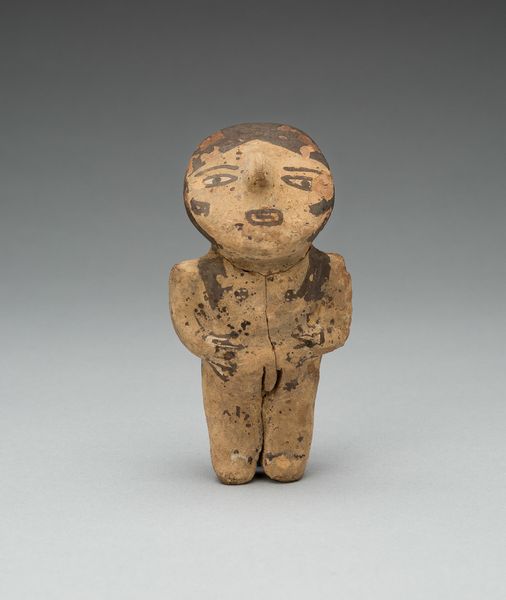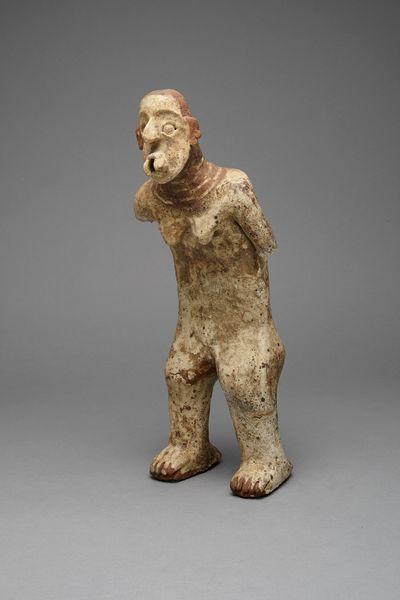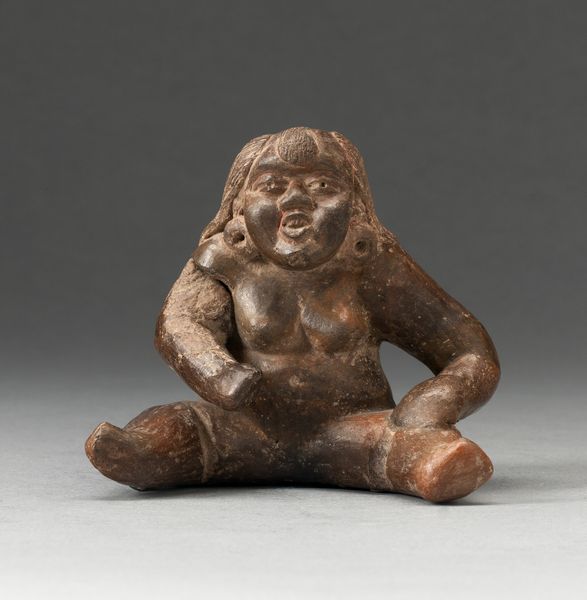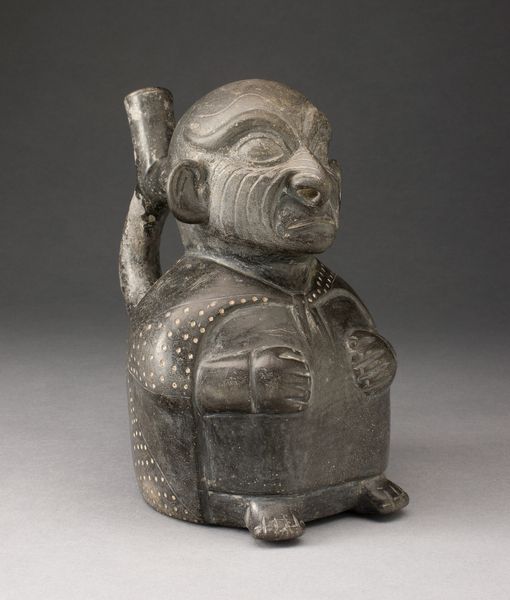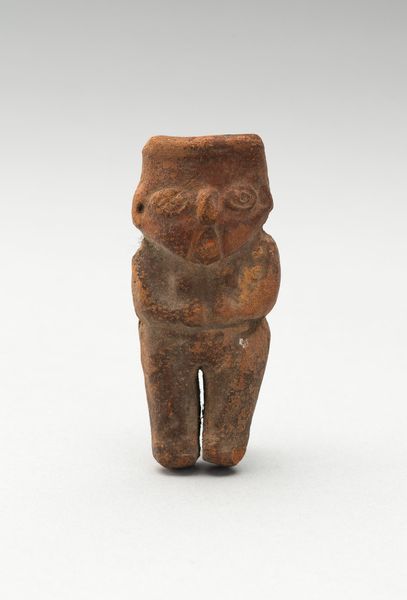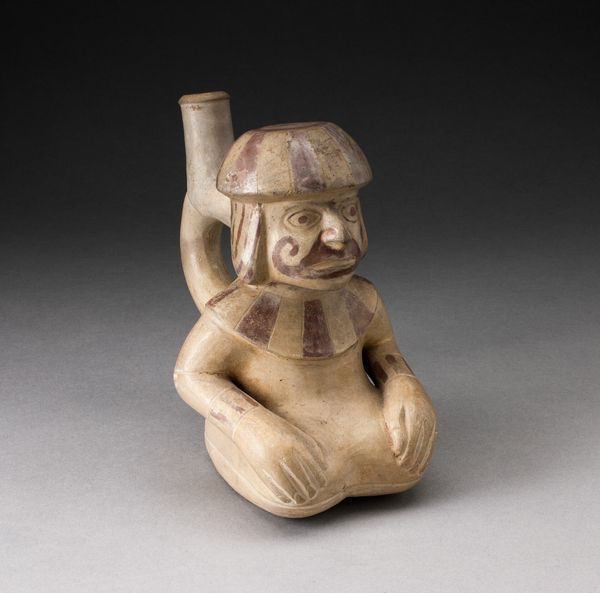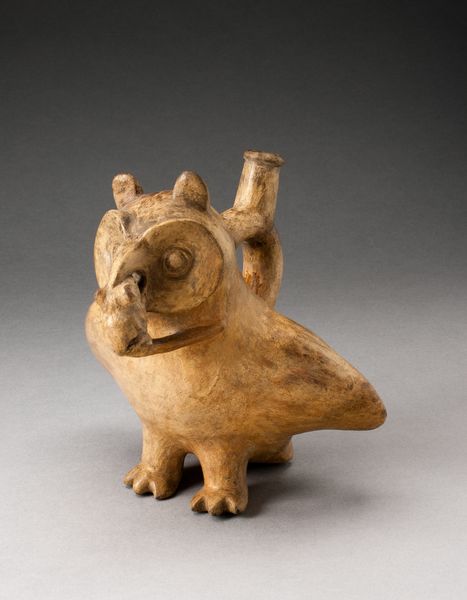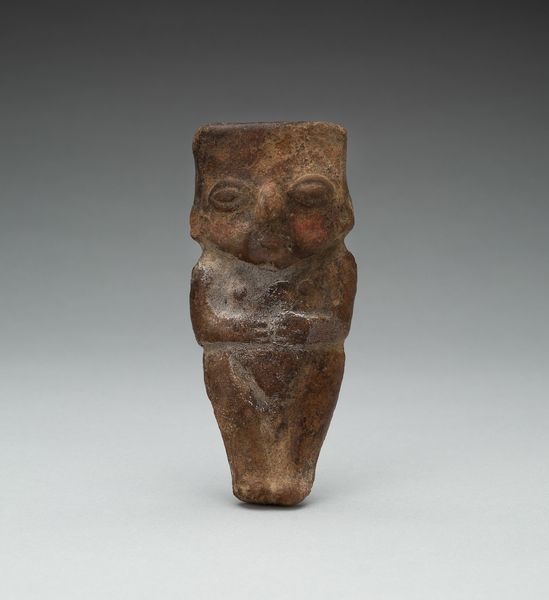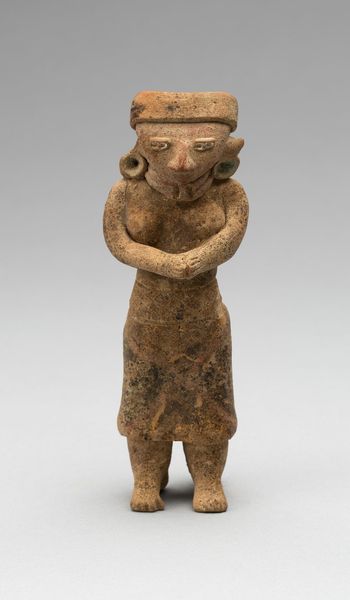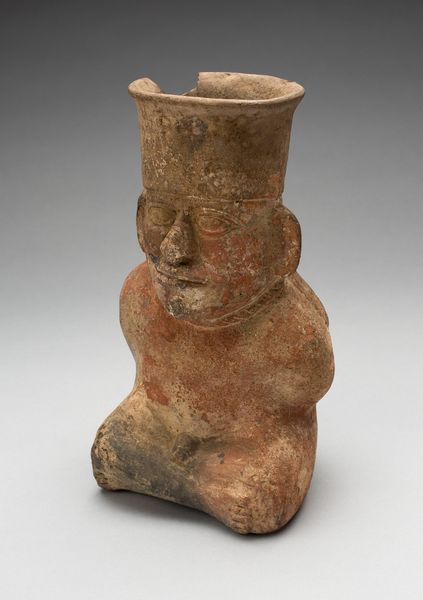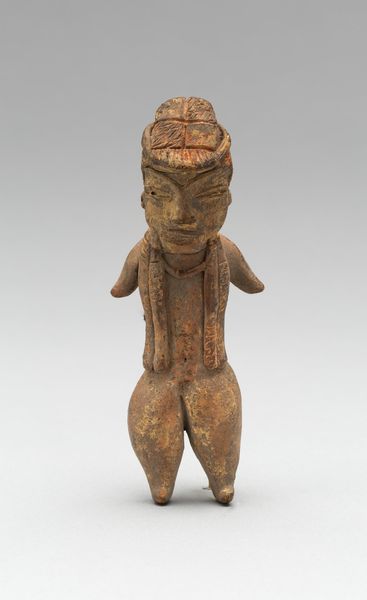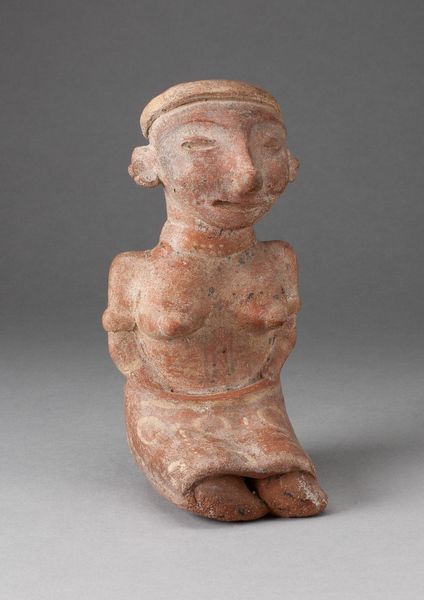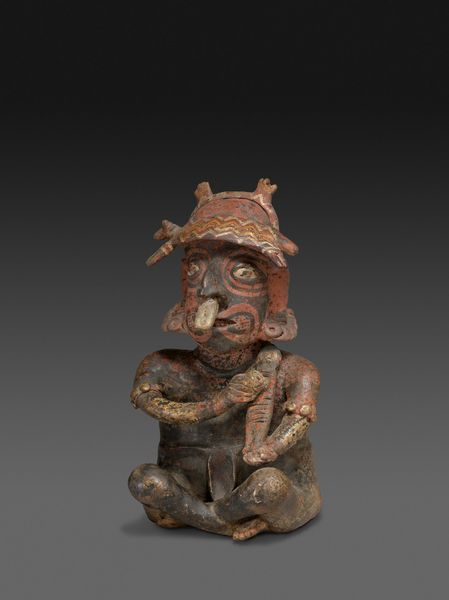
ceramic, sculpture
#
ceramic
#
stoneware
#
sculpture
#
decorative-art
Dimensions: Overall (confirmed): 8 7/8 × 5 × 6 3/4 in., 4 lb. (22.5 × 12.7 × 17.1 cm, 1.8 kg)
Copyright: Public Domain
Editor: Here we have "Creature," a stoneware sculpture made in 1885 by R. W. Martin and Brothers. The glaze gives it such an earthy feel. The unsettling expression contrasts with the almost cute, squat form. What do you see in this piece? Curator: The power of this sculpture lies in its unsettling ambiguity. It’s both beastly and human, evoking folklore. Think of gargoyles protecting sacred spaces. But look closer: does the wide smile indicate innocence, madness, or something else entirely? This is what symbols can convey. Editor: Madness hadn’t occurred to me. I focused on innocence undermined by that mottled texture. But where does that connection to gargoyles come from? Curator: The Martin brothers were working at a time of burgeoning interest in folklore and the preternatural. Consider how the Victorians re-evaluated Gothic architecture. Gargoyles served to ward off evil and thus were potent cultural symbols. It mirrors our complex relationship with the unknown. Does the artist wish to inspire curiosity, laughter, or perhaps… unease? Editor: I initially interpreted it as simply an unusual, decorative piece, but considering its historical and cultural backdrop helps unlock darker, more thought-provoking elements. Thank you. Curator: And for me, considering your instinctive reactions reminds me how art continues to shape new dialogues across time.
Comments
No comments
Be the first to comment and join the conversation on the ultimate creative platform.
